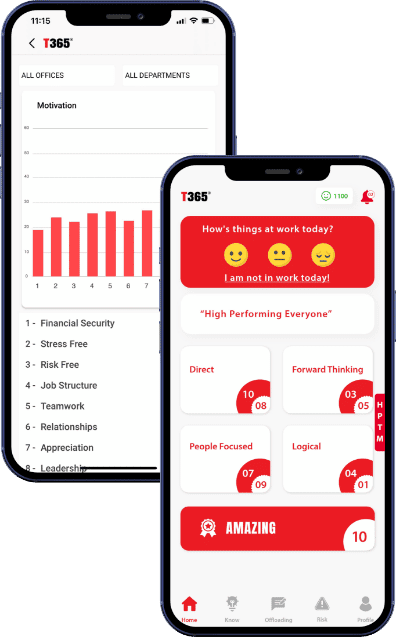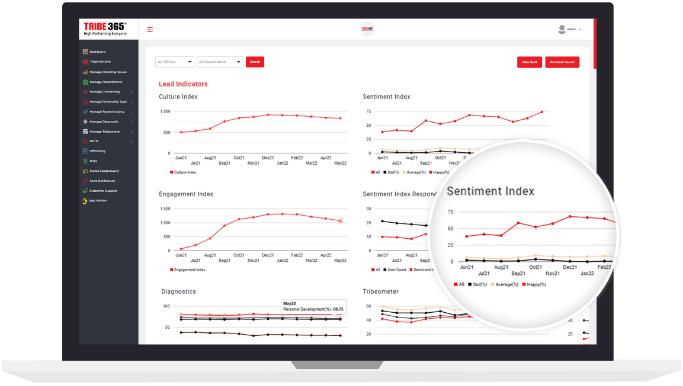Good governance and employee engagement
Dr Hugo Minney FRSA CMgr ChPP is a Behavioural Governance Consultant currently developing and implementing a performance reporting and decision-making benefits management framework for one of the North of England’s biggest employers.
In this blog, Hugo asks ‘How well does your leadership stand up?’ and ‘What impact does that have on profitability and sustainability?’ — read on to find out more.
Why Should Anyone Care?
As a result of some high-profile failures, large companies are now required to report on their leadership and governance arrangements.
For companies listed on the stock exchange, the UK Corporate Governance Code (aka Combined Code) applies. Large private companies, meanwhile, must adhere to the Wates Principles. The same organisation – the Financial Reporting Council – regulates both.
Smaller companies also benefit from being well-run. There’s a reason why larger companies are required to report, and there’s a reason behind the questions asked of larger companies.
Why Is It Important To Be Well-Run?
Impacts share price and valuation
Companies care what major investors think. It affects the share price or valuation, and this affects our ability to borrow money (and the cost of borrowing money) for investments such as acquisitions and improvements.
Larger companies might want to borrow hundreds of millions of pounds, but smaller companies often want to borrow just as much as a proportion of our valuation — and the cost of money can make the difference between profit and loss.
Recruitment and retention of talent
Being well-run affects your ability to recruit the best talent, and the costs of recruitment and retention.
People care
A job is more than coming into the office or site, pushing paper (or widgets) for eight hours, and then going home. Creating an inspiring place to work is profitable – but it’s not always obvious how to go about creating such an environment or culture.
A shortcut is to copy companies and organisations that are already excellent – but how do we find out how they are run?

Profitability and sustainability
Being well-run affects both profitability and sustainability. Profitability is the difference between income and costs. But sustainability is whether you remain profitable in the medium- and long- term.
If you stop spending, for a brief, heady few weeks, your income will stay the same while your costs go down. Then the whole ludicrous short-sightedness catches up with you – with no innovation, a company falls behind its competitors; with no maintenance, expensive repairs surface; with no forward commitments, costs escalate uncontrollably.
The DNA Of A Well-Run Company
The Combined Code or the Wates Principles demonstrate whether a company is well-run or not.
They are self-reported, so you have to be honest in your answers (and if you are a large company, it’s a criminal offence to be dishonest). But they are excellent questions to ask, and thinking through the answers will prepare a company for greatness.
Like DNA, the code is an underlying set of principles, and using an existing code saves having to create your own by trial and error.
Larger organisations are required by law to report. Smaller organisations can report good governance in their annual reports, and one way to do so is by using an established code. It shows ambition, and it shows that the organisation is ready for the big time. It could affect the cost of borrowing, and the leverage that existing investors have when a new investor wants to buy in.

What’s In The Code?
Not surprisingly, there are a lot of parallels between the combined code and the Wates Principles.
I’m going to focus on the Wates Principles because most readers are probably from companies not listed on the UK Stock Exchange, but the information still applies.
UK Corporate Governance Code
The board should promote long-term sustainable success, generating value for shareholders and contributing to wider society.
2. Composition, Succession and Evaluation
An annual evaluation of the board should consider its composition, diversity and how effectively members work together to achieve objectives. Appointments and succession plans should be based on merit and objective criteria
3. Division of Responsibilities
The board and its committees should have an appropriate balance of skills, experience, independence and knowledge, and available time, to discharge their respective duties and responsibilities effectively
4. Audit, risk and internal control
The board should establish internal and external audit functions to ensure integrity
The board should present a fair, balanced and understandable assessment of the company’s position and prospects
5. Remuneration
Remuneration should be designed to support strategy and promote long-term sustainable success. Directors should exercise independent judgement and discretion when authorising remuneration outcomes
Not in the code: Relations with Shareholders
The board as a whole has responsibility for ensuring that a satisfactory dialogue with shareholders takes place. The board should use the AGM to communicate with investors and encourage their participation
Wates Principles
Purpose and Leadership
An effective board develops and promotes the purpose of a company, and ensures that its values, strategy and culture align with that purpose.
Board Composition
Effective board composition requires an effective chair and a balance of skills, backgrounds, experience and knowledge, with individual directors having sufficient capacity to make a valuable contribution
3. Director Responsibilities
The board and individual directors should have a clear understanding of their accountability and responsibilities. The board’s policies and procedures should support effective decision-making and independent challenge
4. Opportunity and Risk
The board should promote the long-term sustainable success of the company by identifying opportunities to create and preserve value, and establishing oversight for the identification and mitigation of risks
5. Remuneration
A board should promote executive remuneration structures aligned to the long-term sustainable success of a company, taking into account pay and conditions elsewhere in the company
Stakeholder Relationships and Engagement
Directors should foster effective stakeholder relationships aligned to the company’s purpose. The board is responsible for overseeing meaningful engagement with stakeholders, including the workforce, and having regard to their views when taking decisions
The table shows a close relationship between the two codes. Note that they are codes – companies have to/should make a statement demonstrating how they abide by each section of the relevant code, rather than with other regulations where we have to confirm that we comply with a statement, or explain what we are doing instead of complying.
Two of the principles are in a different order in the two codes, and one (relations with shareholders) isn’t in the Combined Code, although its equivalent for privately owned companies (stakeholder relationships and engagement) is in the Wates Principles.
How Can You Use This Information?
Organisations want to demonstrate that they are well-run. That’s great for your public image, and everything that depends on your public image: such as valuation, recruitment, marketing, and cost of borrowing.
But organisations that are well-run are also likely to be more successful – more profitable and more sustainable.
Can we combine the two – both improve the running of the organisation, and demonstrate how good we are?
Yes we can. It’s possible – even easy – to get a clear feeling for what our most important stakeholders (our employees) are feeling from hour to hour, from day to day, week to month to year.
With this information, we don’t have to make big changes once a year – we can make small, subtle, non-disruptive changes to increase productivity, enhance innovation, reduce costs, and harness passion. And one solution is easy to implement in large organisations (both listed on the stock exchange, and privately owned), and smaller organisations.
Organisations want to demonstrate that they are well-run. That’s great for your public image, and everything that depends on your public image: such as valuation, recruitment, marketing, and cost of borrowing.
But organisations that are well-run are also likely to be more successful – more profitable and more sustainable.
Can we combine the two – both improve the running of the organisation, and demonstrate how good we are?
Yes we can. It’s possible – even easy – to get a clear feeling for what our most important stakeholders (our employees) are feeling from hour to hour, from day to day, week to month to year.
With this information, we don’t have to make big changes once a year – we can make small, subtle, non-disruptive changes to increase productivity, enhance innovation, reduce costs, and harness passion. And one solution is easy to implement in large organisations (both listed on the stock exchange, and privately owned), and smaller organisations.
Purpose and Leadership
A leader is only a leader if they have followers.
Do your employees turn up at 9 am, push a pile of paper or hammer out some widgets for 8 hours, and go home? Or are they involved? Do they trust and respect the directors? Do the directors and other leaders in the organisation deserve that respect?
Tribe365’s culture index and sentiment index show – in explicit and clear charts and diagrams – whether the employees and directors know the purpose of the organisation, believe in it, and support it.

Tribe365 will chart this over time, so that we can see whether an intervention (a change in work break policy or a new bonus package) works, by how much, and what you can do to make it even better.
When you see something going wrong, you can pinpoint the time it happened and work out whether it was an external impact or something internal. You can identify the problem, and you can also work out how best to respond.
Tools which use the same data (ie WORM – Write Once, Read Many Times, one tool to gather information that is then used for many purposes; within GDPR of course) include kudos values and kudos awards. You know who is making a difference, and how much. Imagine knowing who is the rainmaker and who is claiming credit for other people’s work? Imagine knowing who brings a team together, and who disrupts work? Imagine being able to do something about it – to point to instances and improve behaviours based on evidence? Imagine how you would feel as a director, to find out that your staff appreciate and trust you, even though they might not say it to your face?
Board Composition and Effectiveness
Tribe365’s Team Dynamic Data keeps you informed of the mixes and diversity in every part of the organisation – from the board to business units to teams.
As you compare this to productivity, you can see for yourself the diversity dividend – teams that don’t question or innovate are great where there is no change, but we have had surprises since the start of Covid-19, and it will probably never be boring again. Diverse teams are more resilient, and better able to respond.
But diversity isn’t about sex and race. It’s much more important than that. If everyone in your company went to the same school, lives on the same estate, regardless of sex and race they probably don’t have that much diversity of thought. For diversity, you need to look at personality and interests as well.
With Tribe365’s constantly updated information about the personalities, hopes and fears, and motivation, you can see what is the best mix in each team, and who should be in what role. Try out a couple of changes to prove to everyone it works. And measure the results.
Tribe365 doesn’t do everything – there are two areas of the Wates Principles (Director Responsibilities and Remuneration) where it isn’t the best tool.
Opportunities and Risks
The best ideas come from the people who know the most; who are in the thick of it.
If you want to improve a process, then ask the people who work that process every day.
Is there a better way than Tribe365’s ideas register (where people submit ideas, 24/7, at their convenience)? Or Tribe365 risk register, which doesn’t replace your corporate risk register, but reveals a whole lot of small risks, often easily managed, that avoid or remove a large risk that could be expensive to manage.

Risks and ideas are presented on a SWOT matrix making it easy to make sense of them, work out which are the highest priority or biggest opportunity. So you can take action.
Stakeholder Relationships and Engagement
Your most important stakeholders are often your employees and directors.
Making it personal, could you (your drive, your experience, your knowledge) be replaced?
Are there other people in the organisation who are key people, who make the organisation run so much better because of their knowledge, experience, connections, relationships? Do you know who they are?
How do you engage across the organisation? Tribe365 is tangible and detailed. You might think that a seven-person organisation is too small to need a communications tool, but Tribe365 made a difference here because the information is structured and easy to review. Think what it will do in your organisation where communications aren’t so free because of size.
You can extend Tribe365 to your most important external stakeholders – perhaps your biggest customers and users. For reporting, there’s an engagement index. However, what you really want is to know what your stakeholders are thinking, and delight them before they even ask.
Good Governance and Stakeholder Engagement – What Should You Do Next?
The principles, both the combined code and the Wates principles, are sensible questions to ask about your organisation, and whether it could be more effective, more profitable, less of a headache.
It could even be fun – when you delight people, they often delight you!
The challenge is to know what people are thinking.
The Tribe365 app, supported by Tribe365 interpretations, can get you that information. It creates an honesty of communication which is only uncomfortable for the first few days; after this you recognise the potential and reap the rewards.
The Tribe365 consultancy team can support you to make changes, if you need external support, and of course you can see hour-by-hour and day-by-day if the changes are having the desired effect; you can adjust the changes to get the best effect.
What could be better?
Interested in finding out more? Book a meeting in with the Tribe team today on +44 (0) 1325 734 847 or at team@tribe365.co

Interested in finding out more?
Book a meeting in with the Tribe team
today on +44 (0) 1325734847 or at
team@tribe365.co

















